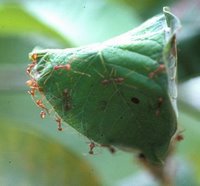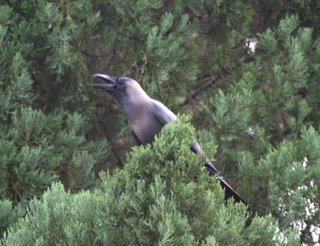BESGroup report for 2005
The year 2005 is coming to a close and 2006 is looming over the horizon. Let us take a few moments to review what we have done since the formation of the Bird Ecology Study Group.
The Nature Society had its last AGM in May 2005. This was where the idea of a new group was conceived. The group's blog was created soon after, in July, and launched with a series of postings on the nesting of the Zebra Doves. On 27th September the Executive Committee of the Nature Society (Singapore) formally accepted BESGroup as a new activity group under its umbrella.
So what have we done so far?
1. We have had formal discussions with NUS and NParks on joint activities and formal collaboration.
2. We initiated a series of talks under the broad heading "Why do birds do what they do?" and kicked it off with a number of talks by Luan Keng, Subaraj and myself. In the coming year we hope to continue with more, to expose birders to all aspects of the avian fauna – time and speakers permitting. We hope to explore aspects of bird migration, diet, habitat selection, flight, mating systems, vocalisation, evolution, etc., and share with members whatever knowledge we can glean from the literature and the net.
3. We are planning field trips to emphasise the ecological aspects of birds, not just their ID. In this respect we will be looking into the inter-relationship of birds with plants and other animals.
4. We plan to aggressively publish articles on bird ecology in the print medium, not only in Nature News and Nature Watch, but also in scientific and other journals and magazines that are published overseas.
5. We plan to link up with overseas bird groups and contribute to their activities.
6. We have an active blog (http://besgroup.blogspot.com/). So far there are in excess of 50 postings on subjects as varied as nesting, mobbing, anting and alcoholism in birds. We now have a team of more than ten birders submitting their observations regularly. The readership is increasing exponentially, approaching 4,000 hits after a short period of only five months.
7. We have familiarised birders with the term “anting” and so far four people have reported seeing this phenomenon. We have also made birders aware that not all birds swallow seeds to pass them out at the other end - some regurgitate them after the pulp is removed in the gut. We plan to further seek out unfamiliar and seldom mentioned aspects of bird ecology and bring them out into the open for discussion.
8. We have an active yahoo discussion loop and will be starting a discussion board soon, thanks to Jacqueline Lau. We also hope to have our own web page in the near future.
9. And finally, we are proud to announce that the group is closely associated with the Singapore Hornbill Project that is currently going on in Pulau Ubin and the Jurong Bird Park (details later).
For 2006 we will be offering not only more of the same but other new projects and ideas. After all, BESGroup is a young group of enthusiastic people brimming with new and novel ideas and raring to go.
Have a great 2006. BESGroup plans to do just that!
YC Wee, R Hale, R Subaraj & G Pereira
30th December 2005
Labels: Miscellaneous














